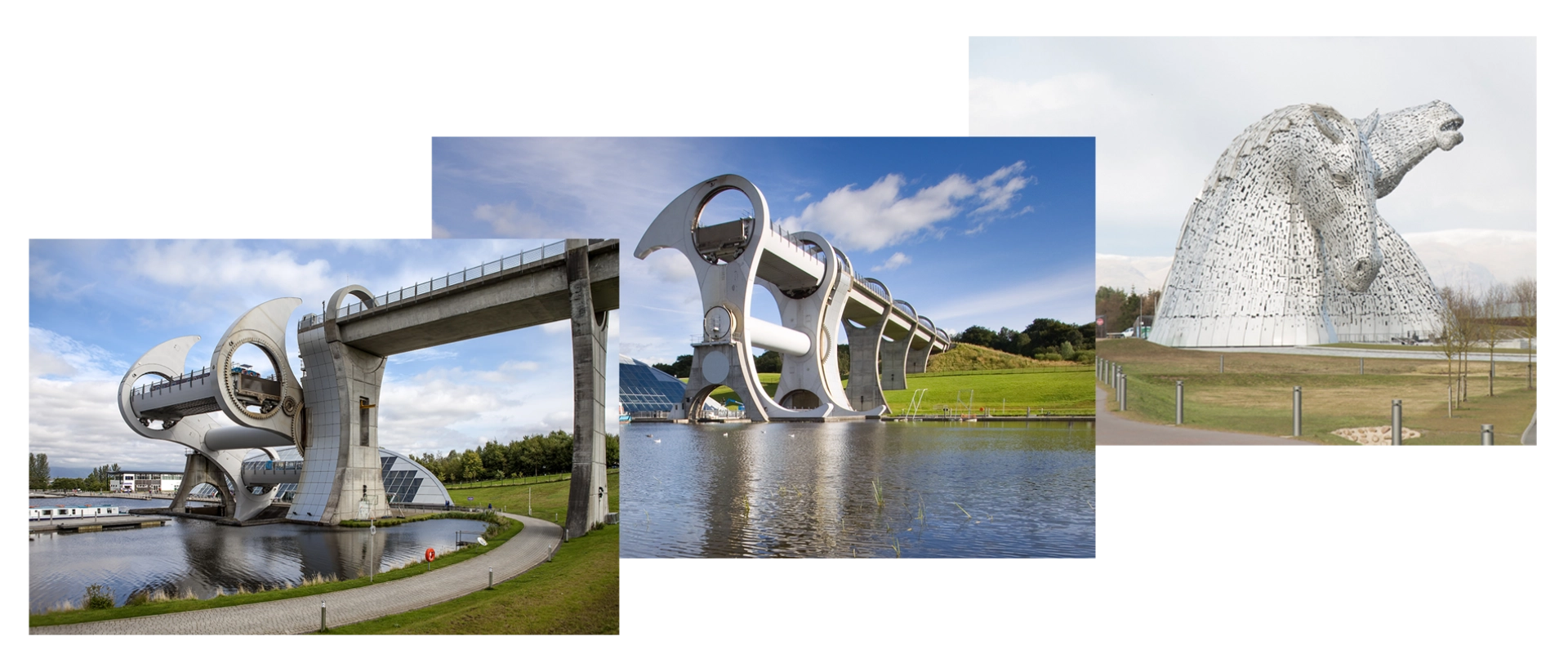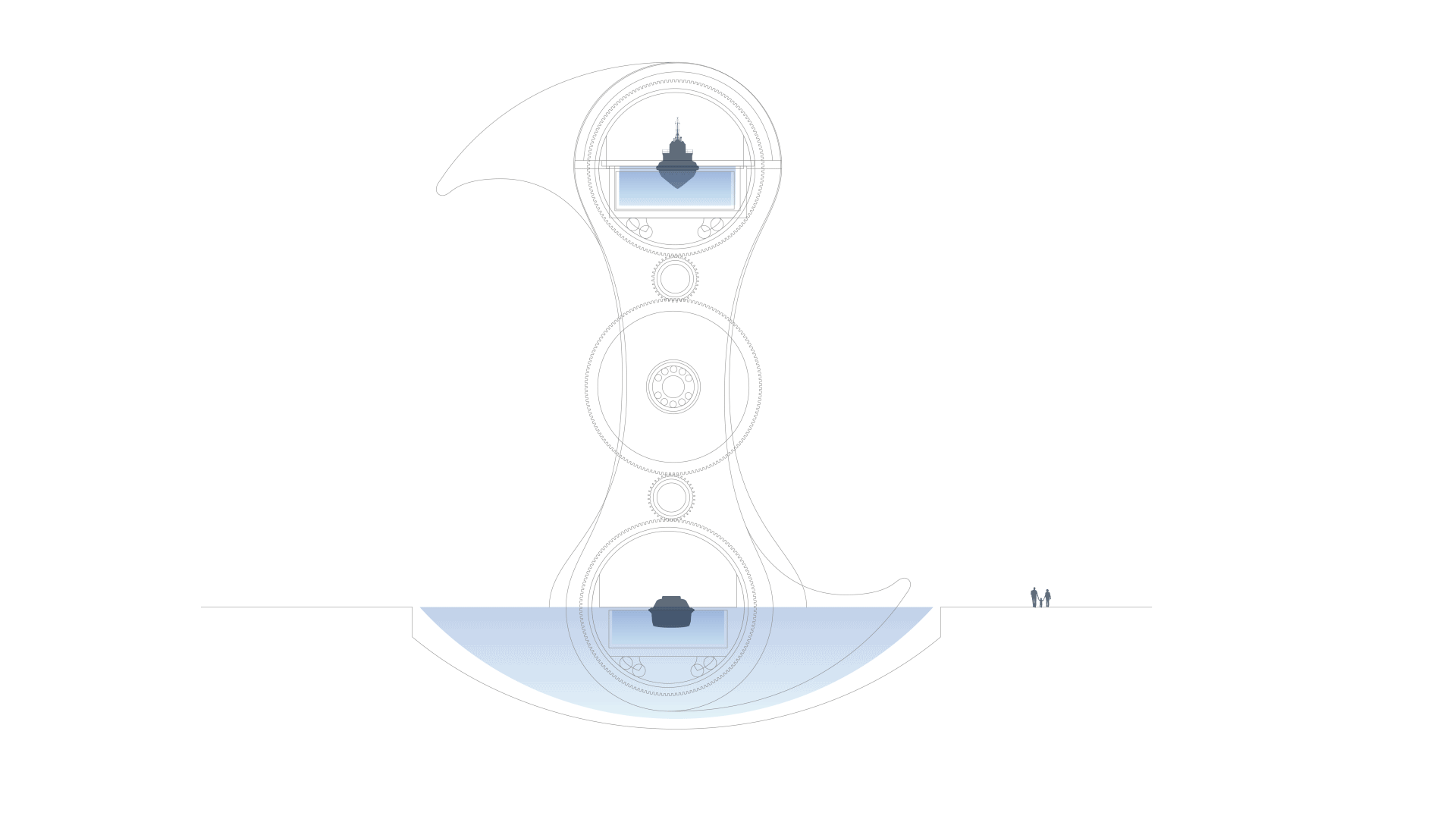Scottish Canals | An endearing ship-lifting giant
Marine, General drive technology, Hydraulics


Richard Williamson
Sales Manager, KTR UK
Scotland is not only fascinating because of its people, but also thanks to its ‘animal kingdom’ of which Nessie (the Loch Ness monster) enjoys unique world fame. The only trouble with Nessie is that she is a very shy creature and has only rarely been seen. Some have waited a lifetime for a glimpse of the elusive beast. But, if you don’t want to wait in vain, and you’re willing to get to know a slightly different, yet no less fascinating, aquatic Highland beast, you need only travel south from Loch Ness towards Falkirk. Housed in the Millennium Link – a canal connecting east to west Scotland – an imposing solitary character wallows in the waters. Unlike Nessie, the Falkirk Wheel -the world's only rotating boat lift -is as regular as clockwork. As a result, this 20-metre long nautical colossus attracts tourists as successfully as chequered kilts and bagpipes.

Resembling a cross-breed between a Celtic axe and a slender necked waterfowl, the two rotating heads of the 1,800-ton steel beast tower out of the water as they mimic the motion of a giant ship’s propeller. Each of the wheel's two ‘mouths’ contain a massive water-bearing gondola, capable of cradling two full size narrowboats and hoisting them easily and nimbly from the lower waters of the Forth and Clyde Canal up to the Union Canal 33 metres above, enabling an onward journey east to Edinburgh or west towards Glasgow. In the past, boats had to negotiate eleven locks over a distance of 1.5 kilometre to overcome the difference in elevation. Today a semi-rotation of the Falkirk Wheel achieves a similar goal – in just four minutes!
When required to flex its lifting ‘muscles’, the leviathan makes use of a simple yet ingenious principle. The opposing gondolas are each filled with 300 tons of water and, as a result, balance each other out. Consequently, the drive does not have to do any lifting but merely overcome friction. Torque is generated by ten hydraulic motors grouped concentrically around the rotational axis located in the reinforced rear concrete pylon. Together with an emergency generator and transformers driving the wheel, the hydraulic pumps that propel the motors are located on three levels underneath the wheel’s bearing. The hydraulic motors work using a 1:100 ratio on the gearing of the rear bearing and simultaneously function as brakes.


To ensure a smooth hydraulic operation, Scottish Canals commissioned the electrohydraulic specialist Denley Hydraulics in England’s West Yorkshire, who in turn took KTR on board for the demanding project. In addition to ROTEX flexible jaw couplings, which are installed between the motors and pumps, the hydraulic units also feature KTR bellhousings and damping elements.
While Nessie has been ingrained in the human collective memory as a cryptozoological hybrid from prehistoric times, the Falkirk Wheel is perceived as a technically aesthetic fusion of modern-day engineering and design. So much so that the Royal Commission for Fine Arts ennobled the ship's lift as a “contemporary sculpture”. The captivating ship-lifting giant has not only made it into London's Victoria and Albert Museum in the form of a model, but from 2007, it has also adorned the rear side of Scottish £50 notes (series 2007 – 2011) issued by the Bank of Scotland.


